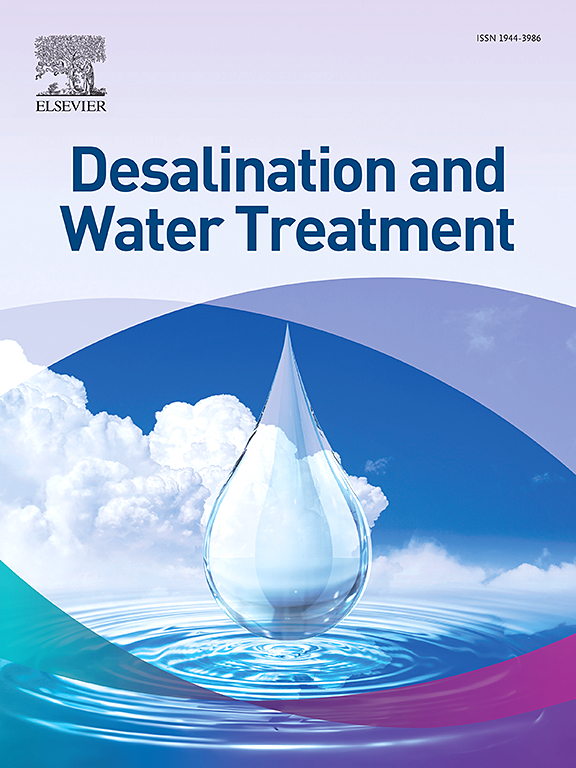Aqueous bromate (BrO3-) removal using FILTRASORB 400 activated carbon: effect of process variables and modeling
IF 1
4区 工程技术
Q4 ENGINEERING, CHEMICAL
引用次数: 0
Abstract
Aqueous phase bromate (BrO 3– ) treatment using a commercial granular activated carbon (GAC, FILTRASORB 400) indicated that bromate removal is highly influenced by the operational factors such as pH, initial bromate concentration, contact time and the adsorbent dosage. The effect of pH on bromate treatment indicated higher to significant bromate removal at pH ≤ 4, whereas for pH range 5–9 ~ 50% bromate removal was noted. At pH higher than 9, a significant decrease in the bro - mate removal was noted that was ascribed to changes in the GAC surface speciation. Furthermore, a higher mass-based bromate removal transpired with an increase in the initial bromate concen - tration that was explained based on higher mass transfer and diffusion. Also, the bromate adsorp - tion experimental data fitted well to the Freundlich adsorption isotherm, indicating a multilayer bromate ions accumulation on the GAC surface. Furthermore, an increasing ‘ q e vs. C e ’ trend also implied a multilayer bromate ions attachment on the GAC surface. Moreover, the kinetics exper - iments showed that the pseudo-second-order kinetic model better describes the respective GAC-based bromate removal as compared to pseudo-first-order kinetic model. This indirectly indicated that the removal of bromate using granular activated carbon is a more involved process, with both adsorption and reduction causing the noted bromate removal ( GAC-BrO 3 ↔ GAC-BrO ↔ GAC -Br). It is suggested that initially the adsorbed BrO 3 – ion is reduced to BrO – (hypobromite) followed by a further reduction of BrO – to Br – (bromide) ion. Additionally, as the surface bound bromate ion is reduced to bromide, it would cause further mass transfer of solution phase bromate ion towards the GAC surface, which is also indirectly supported by the aforementioned Freundlich based multilayer bromate removal trend.使用FILTRASORB 400活性炭去除水中溴酸盐(BrO3-):工艺变量和建模的影响
本文章由计算机程序翻译,如有差异,请以英文原文为准。
求助全文
约1分钟内获得全文
求助全文
来源期刊

Desalination and Water Treatment
工程技术-工程:化工
CiteScore
2.20
自引率
9.10%
发文量
0
审稿时长
5.3 months
期刊介绍:
The journal is dedicated to research and application of desalination technology, environment and energy considerations, integrated water management, water reuse, wastewater and related topics.
 求助内容:
求助内容: 应助结果提醒方式:
应助结果提醒方式:


